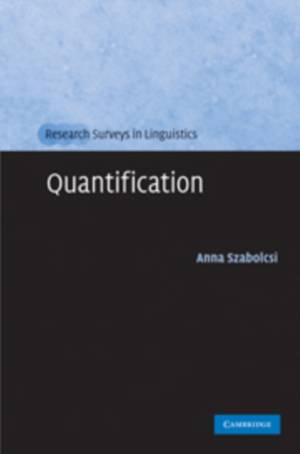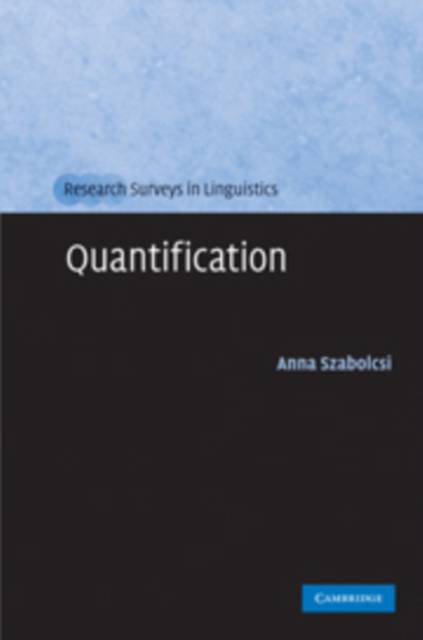
- Afhalen na 1 uur in een winkel met voorraad
- Gratis thuislevering in België vanaf € 30
- Ruim aanbod met 7 miljoen producten
- Afhalen na 1 uur in een winkel met voorraad
- Gratis thuislevering in België vanaf € 30
- Ruim aanbod met 7 miljoen producten
Zoeken
€ 180,45
+ 360 punten
Uitvoering
Omschrijving
Quantification forms a significant aspect of cross-linguistic research into both sentence structure and meaning. This book surveys research in quantification starting with the foundational work in the 1970s. It paints a vivid picture of generalized quantifiers and Boolean semantics. It explains how the discovery of diverse scope behaviour in the 1990s transformed the view of quantification, and how the study of the internal composition of quantifiers has become central in recent years. It presents different approaches to the same problems, and links modern logic and formal semantics to advances in generative syntax. A unique feature of the book is that it systematically brings cross-linguistic data to bear on the theoretical issues, covering French, German, Dutch, Hungarian, Russian, Japanese, Telugu (Dravidian), and Shupamem (Grassfield Bantu) and points to formal semantic literature involving quantification in around thirty languages.
Specificaties
Betrokkenen
- Auteur(s):
- Uitgeverij:
Inhoud
- Aantal bladzijden:
- 264
- Taal:
- Engels
- Reeks:
Eigenschappen
- Productcode (EAN):
- 9780521887960
- Verschijningsdatum:
- 17/01/2011
- Uitvoering:
- Hardcover
- Formaat:
- Ongenaaid / garenloos gebonden
- Afmetingen:
- 155 mm x 229 mm
- Gewicht:
- 539 g

Alleen bij Standaard Boekhandel
+ 360 punten op je klantenkaart van Standaard Boekhandel
Beoordelingen
We publiceren alleen reviews die voldoen aan de voorwaarden voor reviews. Bekijk onze voorwaarden voor reviews.











